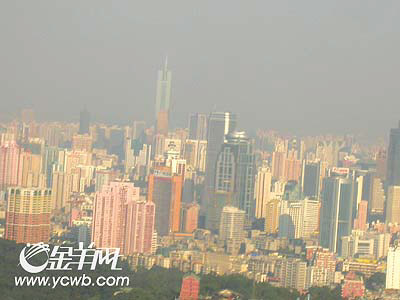 |
| Guangzhou city, the capital of Guangdong, south China, in haze |
Air pollution in the southern Chinese province of Guangdong increased markedly last year, with 27 major cities and counties suffering a record number of hazy days, Xinhua news agency said on Wednesday.
China's industrial heartland of Guangdong, which borders Hong Kong, recorded an average of 75.7 days of haze in 2007, the highest level since the Communists came to power in 1949 and a "marked increase" over normal years, according to a new report released by Guangdong's meteorological bureau, Xinhua said.
The report found the industrial heartland of the Pearl River Delta, whose factories have powered China's export growth, fared the worst.
Provincial blackspots included Enping with 240 hazy days and Dongguan with 213, Xinhua added.
"It may take at least 20 or 30 years to bring the haze under control. Cities in the delta region should join in fighting air pollution instead of acting by themselves," Wu Dui, an atmospheric studies expert from the Guangdong Provincial Meteorological Bureau, was quoted by Xinhua as saying.
Neighbouring Hong Kong has also grappled with chronic air pollution, partly from industrial smog blown in from Guangdong, but also from coal-fired power stations.
The city's picturesque harbour is now regularly shrouded in a thick smog, particularly during the winter months.
Hong Kong and Guangdong have committed to ambitious air-quality reduction targets by 2010, including cutting sulphur dioxide and suspended particulate emissions by upwards of 50 percent compared with 1997 levels.
But green groups and scientists have expressed scepticism the targets will be met.
China's coastal waters have remained severely polluted and excessive discharge of industrial waste is the main culprit, a government report said.
A total of 145,000 square km (55,985 sq miles) of Chinese coastal waters did not meet environmental standards, according to the 2007 China Oceanic Environment Report by the State Oceanic Administration.
In another report, the State Oceanic Administration warned that sea levels along China's coast had risen 90 mm over the past 30 years, faster than the average global rate.
The northern port city of Tianjin had seen an alarming increase of 196 mm in its sea level during the period, while financial centre Shanghai had seen a 115-mm rise. (Reporting by James Pomfret and Guo Shipeng; Editing by Nick Macfie)

Editor: canton fair |




